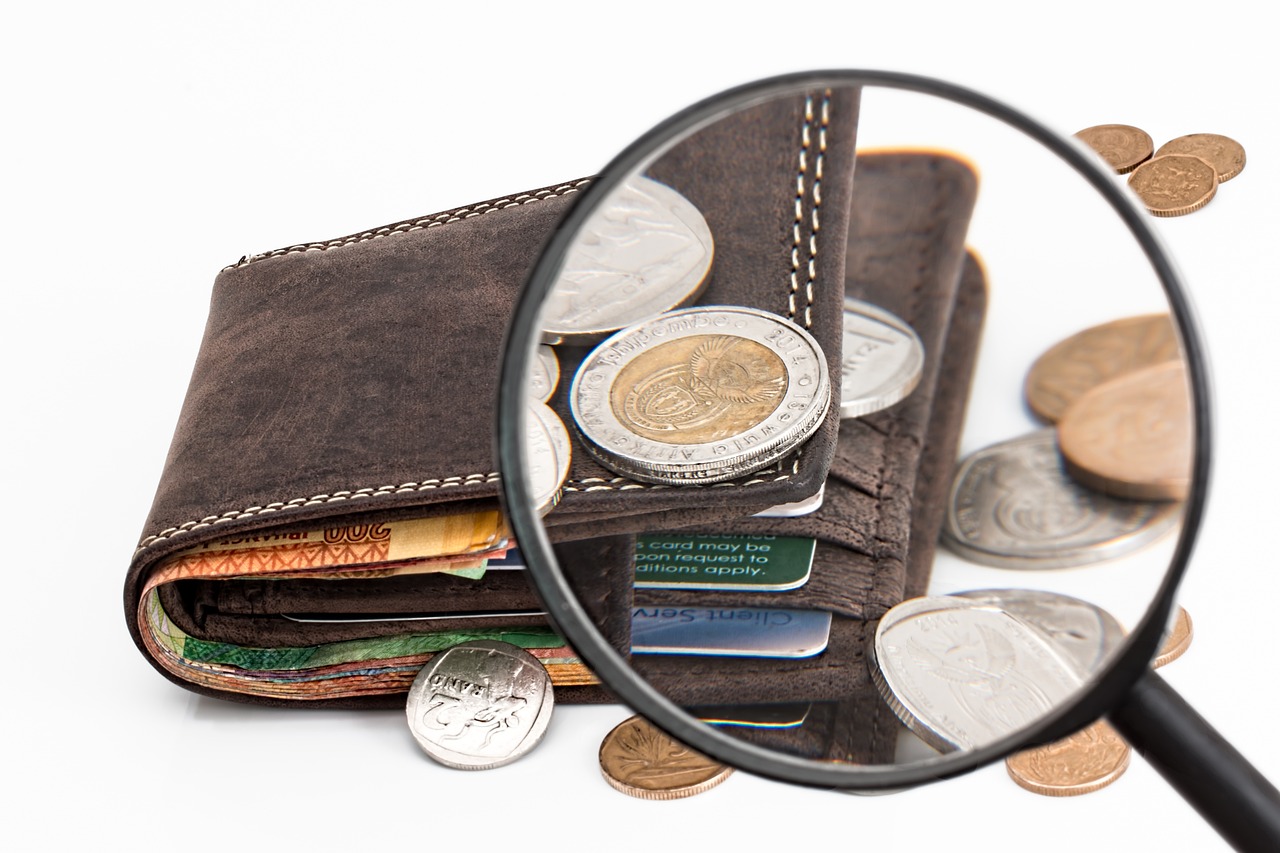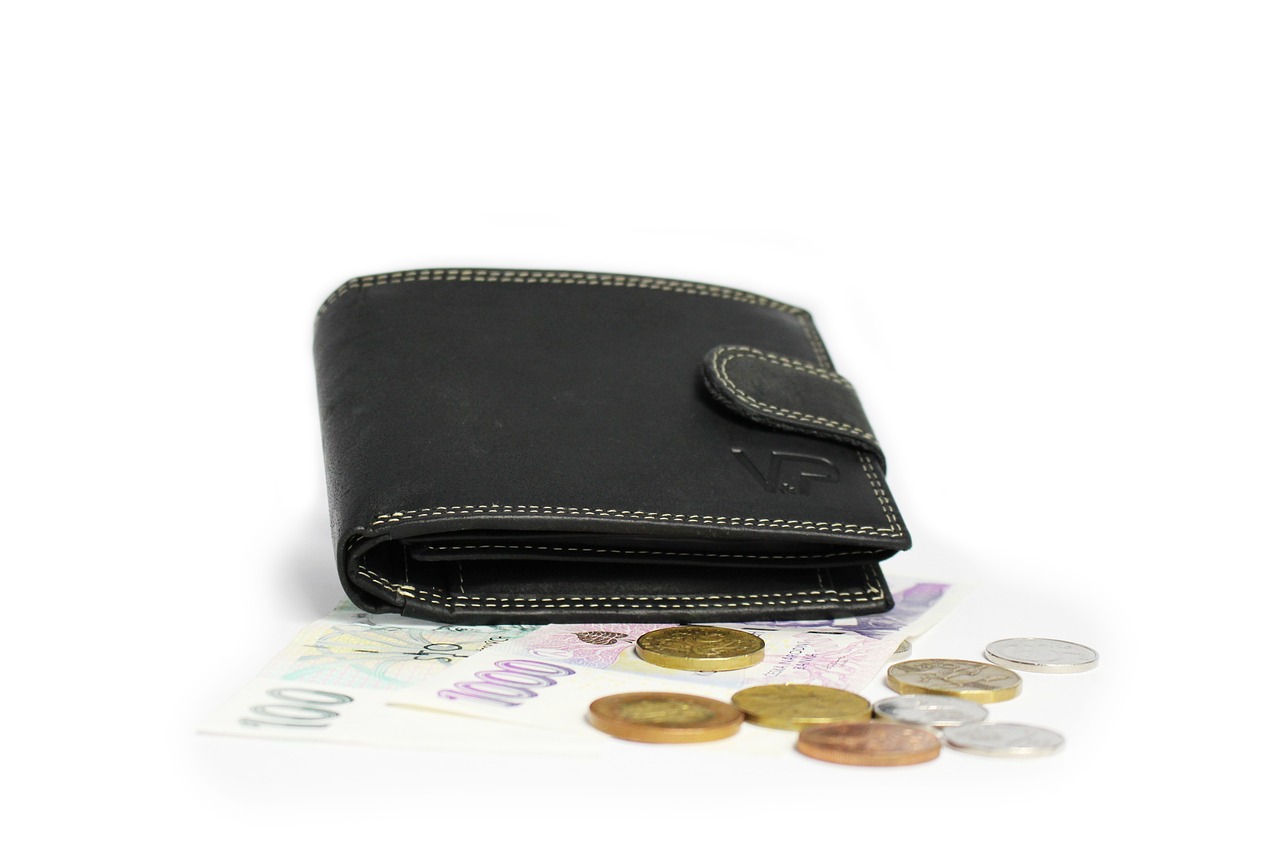How to Use Wallets for E-commerce Platforms
In today's fast-paced digital world, the way we shop has transformed dramatically. The rise of e-commerce has brought about a revolution in how consumers interact with brands, and at the heart of this transformation are digital wallets. These virtual tools have not only simplified the payment process but have also enhanced the overall shopping experience. Imagine being able to complete your purchase with just a couple of taps on your smartphone, without fumbling for your credit card or entering lengthy details. That’s the magic of wallets in e-commerce!
But how exactly do these wallets work, and why should businesses consider integrating them into their platforms? The answer lies in understanding the fundamental benefits they offer. For starters, wallets facilitate quick and secure transactions, which is essential in retaining customers who value their time. Moreover, with the increasing concerns around online security, digital wallets provide an added layer of protection for sensitive information. This not only builds trust but also encourages more consumers to shop online.
Integrating digital wallets into e-commerce platforms is not just about keeping up with trends; it’s about enhancing user experience and streamlining transactions. When customers can pay easily and securely, they’re more likely to return. Think of it like a well-oiled machine where every part works seamlessly together. From the initial browsing stage to the final checkout, every interaction should feel effortless. So, let’s dive deeper into the world of digital wallets and explore how they can be effectively utilized in e-commerce.
Digital wallets are essentially virtual tools that store your payment information securely. They allow users to make purchases using their smartphones or computers without the need for physical cards. This convenience is a game-changer in the e-commerce realm, where speed and efficiency are paramount. By using a digital wallet, consumers can save time and avoid the hassle of entering card details every time they shop online.
Utilizing wallets in e-commerce offers numerous advantages, including:
- Improved Transaction Speed: Wallets facilitate quicker checkouts, which can lead to higher conversion rates.
- Enhanced Security: Digital wallets often come equipped with advanced security features, reducing the risk of fraud.
- Better Customer Satisfaction: A seamless payment process can significantly enhance the shopping experience, leading to increased customer loyalty.
When customers feel secure and valued, they’re more likely to return for future purchases, ultimately driving sales and fostering brand loyalty.
One of the standout features of digital wallets is their advanced security protocols. These include encryption and tokenization, which protect sensitive information during transactions. By using these technologies, wallets significantly reduce the risk of fraud, building customer trust in the process. In the digital age, where data breaches are all too common, having a secure payment method is essential for any e-commerce business.
To further bolster security, many wallets implement two-factor authentication. This feature requires users to verify their identity through a secondary method, such as a text message or email confirmation. By adding this extra layer of security, businesses can significantly reduce unauthorized access to wallet accounts, ensuring that customer data remains safe.
Additionally, many digital wallets incorporate sophisticated fraud detection systems. These systems monitor transactions in real-time, identifying suspicious activities and preventing potential losses for both merchants and consumers. This proactive approach to security not only protects users but also enhances the overall credibility of the e-commerce platform.
There are various types of digital wallets available, catering to different user preferences and needs. Some common types include:
- Mobile Wallets: These are apps designed for smartphones that allow users to make payments directly from their devices.
- Online Wallets: Accessible via web browsers, these wallets store payment information for online purchases.
- Cryptocurrency Wallets: These wallets specifically store digital currencies, allowing users to transact in cryptocurrencies.
Each type of wallet serves unique purposes and can significantly enhance the shopping experience based on user preferences.
Integrating digital wallets into e-commerce platforms can enhance user experience and streamline payment processes. However, understanding the technical aspects of integration is crucial for successful implementation. It’s not just about adding a new payment option; it’s about creating a seamless experience for users.
When selecting a wallet provider, businesses should evaluate various factors such as features, fees, and customer support. A reliable provider can significantly impact the overall efficiency of the payment system. It’s essential to choose a provider that aligns with your business goals and offers robust security measures.
The implementation of digital wallets requires careful planning. Key steps include:
- API Integration: Ensuring that the wallet integrates smoothly with the existing e-commerce platform.
- User Interface Design: Creating an intuitive design that enhances user experience.
- Testing: Conducting thorough testing to identify and resolve any issues before launch.
Proper execution of these steps ensures a seamless experience for both merchants and customers, paving the way for a successful integration.
Adopting best practices for wallet usage can optimize the e-commerce experience. These practices include:
- User Education: Informing users about wallet features and security measures can enhance their confidence in using digital wallets.
- Regular Updates: Keeping wallet software updated ensures that security measures are up to date.
- Monitoring Transaction Analytics: Regularly analyzing transaction data can provide insights for continuous improvement.
By implementing these best practices, e-commerce platforms can create a more secure and satisfying shopping experience for their customers.
1. What is a digital wallet?
A digital wallet is a virtual tool that allows users to store payment information securely and make transactions online or in-store using their devices.
2. Are digital wallets safe to use?
Yes, digital wallets use advanced security features such as encryption and two-factor authentication to protect user information and transactions.
3. Can I use multiple wallets for e-commerce?
Absolutely! Users can have multiple digital wallets, allowing them to choose the one that best fits their needs for different transactions.
4. How do I integrate a digital wallet into my e-commerce platform?
Integration involves selecting a wallet provider, planning API integration, designing the user interface, and testing the system for a seamless experience.

Understanding Digital Wallets
Digital wallets, often referred to as e-wallets, are virtual tools that revolutionize the way we handle transactions in the e-commerce world. Imagine having a wallet that fits in your pocket but holds all your credit cards, debit cards, loyalty cards, and even cash, all while being incredibly secure. That’s the magic of digital wallets! They allow users to store their payment information securely and access it with just a few taps on their smartphones or computers. This convenience makes digital wallets not just a luxury, but a necessity in today’s fast-paced online shopping environment.
One of the standout features of digital wallets is their ability to facilitate quick transactions. In a world where time is money, the faster a customer can check out, the better. Digital wallets streamline this process, allowing for one-click payments and reducing the hassle of entering payment details every single time. This not only enhances the user experience but also encourages repeat purchases, as customers are more likely to return to a platform that makes their shopping experience smooth and efficient.
Moreover, digital wallets cater to a variety of payment methods, including credit cards, bank accounts, and even cryptocurrencies. This flexibility is appealing to a broad audience, as it allows users to choose how they want to pay. Whether it’s a traditional credit card or a cutting-edge cryptocurrency, digital wallets can handle it all. It's like having a universal remote that controls all your electronic devices—convenient and efficient!
Additionally, the integration of digital wallets into e-commerce platforms promotes enhanced security measures. By employing advanced technologies such as encryption and tokenization, these wallets ensure that sensitive information is protected during transactions. This not only reduces the risk of fraud but also builds trust with customers, who are more likely to shop with businesses that prioritize their safety.
In summary, understanding digital wallets is crucial for both consumers and e-commerce businesses. They offer a blend of convenience, speed, and security that is hard to ignore. As we delve deeper into the world of digital wallets, we’ll explore their benefits, types, and best practices for integrating them into e-commerce platforms.

Benefits of Using Wallets in E-commerce
In the fast-paced world of online shopping, digital wallets have emerged as a game changer. They aren’t just a convenient way to make payments; they are transforming the entire e-commerce experience. Imagine being able to complete your purchase with just a tap on your smartphone, bypassing the tedious process of entering credit card details every time. This convenience is just one of the many benefits that digital wallets bring to e-commerce platforms.
One of the most significant advantages of using digital wallets is the improved transaction speed. With wallets, transactions can be completed in seconds, which is a stark contrast to traditional payment methods that often involve multiple steps. This speed not only enhances the shopping experience for customers but can also lead to increased sales for merchants. When customers can check out quickly, they are less likely to abandon their carts, resulting in higher conversion rates.
Additionally, digital wallets offer enhanced security features that protect sensitive information. Unlike traditional payment methods where users must enter their card details, wallets often use methods like tokenization and encryption. This means that even if a hacker intercepts a transaction, they won’t have access to the actual credit card information. This level of security fosters trust among consumers, which is crucial in an era where data breaches are all too common.
Furthermore, utilizing digital wallets can significantly boost customer satisfaction. Customers appreciate the convenience of having all their payment options in one place. They can store multiple cards, loyalty points, and even coupons, making the shopping process not only easier but also more rewarding. When customers feel that their shopping experience is streamlined and user-friendly, they are more likely to return to the same platform, fostering long-term loyalty.
To summarize, the benefits of using digital wallets in e-commerce include:
- Improved transaction speed: Quick and efficient checkouts reduce cart abandonment.
- Enhanced security: Advanced protection measures safeguard sensitive information.
- Increased customer satisfaction: Convenience and rewards lead to repeat business.
As e-commerce continues to evolve, integrating digital wallets is becoming less of an option and more of a necessity. The advantages they offer not only improve the shopping experience but also contribute to the overall success of online businesses. In a world where time is money, the speed, security, and satisfaction that digital wallets provide are invaluable assets for both consumers and merchants alike.

Enhanced Security Features
In the world of e-commerce, security is not just a feature; it's a necessity. As digital transactions become the norm, in digital wallets play a pivotal role in safeguarding sensitive information. Imagine walking through a bustling marketplace, where every stall is a potential threat to your privacy. Now, picture a digital wallet as your trusted bodyguard, ensuring that your personal and financial data remain secure. With the implementation of advanced security protocols, digital wallets are designed to protect users from ever-evolving threats.
One of the most significant aspects of digital wallet security is encryption. This process transforms your data into a code that can only be deciphered by authorized parties. It’s akin to locking your valuables in a safe—only those with the right key can access it. Furthermore, many wallets utilize tokenization, which replaces sensitive information with unique identification symbols. This means that even if a hacker intercepts your data, they would only find a string of meaningless characters, rendering the information useless.
In addition to encryption and tokenization, digital wallets often incorporate two-factor authentication (2FA). This feature requires users to provide two forms of identification before gaining access to their accounts. Think of it as a double lock on your front door—an extra layer of protection that significantly minimizes the risk of unauthorized access. For instance, after entering your password, you might receive a text message with a code that you must enter to complete the login process. This simple step can drastically reduce the likelihood of fraud.
Moreover, many wallet providers have integrated fraud detection systems that actively monitor transactions in real-time. These systems analyze patterns and behaviors to identify any suspicious activities. If something seems off, such as a transaction from an unusual location or a sudden spike in spending, the system can flag it for further investigation. This proactive approach not only protects consumers but also helps merchants mitigate potential losses. The combination of these security measures creates a robust defense against fraud, ensuring that both parties can transact with confidence.
To summarize, the enhanced security features of digital wallets include:
- Encryption - Protects sensitive data by converting it into a secure format.
- Tokenization - Replaces sensitive information with unique identifiers.
- Two-Factor Authentication - Adds an extra layer of security by requiring two forms of verification.
- Fraud Detection Systems - Monitors transactions in real-time to identify suspicious activities.
As e-commerce continues to grow, the importance of these enhanced security features cannot be overstated. They are not just optional add-ons; they are essential components that foster trust and confidence between consumers and merchants. By prioritizing security, digital wallets pave the way for a safer online shopping experience, encouraging more users to embrace the convenience of digital transactions.
1. What is the main purpose of digital wallets?
Digital wallets are designed to securely store payment information and facilitate quick, convenient transactions for users in e-commerce.
2. How do digital wallets enhance security?
They enhance security through features like encryption, tokenization, two-factor authentication, and fraud detection systems that protect sensitive information.
3. Are digital wallets safe to use?
Yes, digital wallets are generally safe to use, especially those that implement advanced security measures. However, users should also practice good security habits.
4. Can I use my digital wallet for international transactions?
Most digital wallets support international transactions, but it's essential to check with your wallet provider for any specific limitations or fees.
5. What should I do if I suspect fraud on my digital wallet?
If you suspect fraud, immediately contact your wallet provider to report the issue and secure your account. It's also advisable to change your passwords and enable any additional security features available.

Two-Factor Authentication
In the ever-evolving world of digital transactions, security is paramount. One of the most effective methods to enhance security is through Two-Factor Authentication (2FA). This process requires users to provide two different forms of identification before accessing their digital wallets. Imagine it as a double lock on your front door; you wouldn't just rely on a single lock to protect your home, right? Similarly, 2FA adds an extra layer of protection to your financial information.
The first factor is typically something you know, like your password, while the second factor could be something you have, such as a smartphone app that generates a unique code or a text message sent to your phone. This way, even if someone manages to steal your password, they would still need that second piece of information to gain access to your wallet. It’s like needing both a key and a secret code to open a vault!
Implementing 2FA in digital wallets not only reduces the risk of unauthorized access but also builds trust among users. When customers see that a platform takes their security seriously, they are more likely to engage in transactions without fear of fraud. In fact, many users report feeling significantly safer when using wallets that support two-factor authentication.
To give you a clearer picture, here are some common methods of Two-Factor Authentication:
- SMS Verification: A code is sent to the user's registered mobile number, which must be entered to complete the login.
- Authentication Apps: Apps like Google Authenticator or Authy generate time-sensitive codes that users must input.
- Email Verification: A unique code is sent to the user's email address for verification.
In conclusion, adopting Two-Factor Authentication is a critical step in safeguarding digital wallets. It not only protects individual accounts but also contributes to the overall integrity of the e-commerce ecosystem. By ensuring that only authorized users can access their wallets, businesses can significantly reduce the risk of fraud and increase customer confidence in their services.
Q1: What is Two-Factor Authentication?
A1: Two-Factor Authentication (2FA) is a security process that requires two different forms of identification to access an account, enhancing security.
Q2: Why should I use 2FA for my digital wallet?
A2: Using 2FA adds an extra layer of security, making it much harder for unauthorized users to access your wallet, even if they have your password.
Q3: What are the common methods of 2FA?
A3: Common methods include SMS verification, authentication apps, and email verification.
Q4: Does 2FA slow down the login process?
A4: While it may take an extra moment to enter the second factor, the increased security it provides is well worth the slight delay.
Q5: Can I disable 2FA?
A5: Most platforms allow you to disable 2FA, but it’s strongly advised to keep it enabled for enhanced security.

Fraud Detection Systems
In the rapidly evolving world of e-commerce, have become a crucial line of defense against the ever-increasing threat of online fraud. These systems leverage advanced algorithms and machine learning techniques to monitor transactions in real-time, analyzing patterns and behaviors that may indicate fraudulent activity. Imagine a security guard who never sleeps, constantly watching over your digital transactions—that's essentially what these systems do!
One of the most significant advantages of fraud detection systems is their ability to identify suspicious transactions before they can cause harm. By analyzing various factors such as transaction history, user behavior, and geographic location, these systems can flag anomalies that deviate from the norm. For instance, if a user typically makes purchases from New York but suddenly attempts a transaction from a different country, the system can trigger an alert, prompting further verification.
Moreover, many modern fraud detection systems utilize machine learning to improve their accuracy over time. As they process more transactions, they learn from past data, refining their algorithms to reduce false positives—those annoying instances where legitimate transactions are mistakenly flagged as fraudulent. This ongoing learning process is akin to a student who becomes more adept at recognizing patterns in a subject over time. The result? A smoother experience for users and fewer headaches for merchants.
To give you a clearer picture of how these systems operate, let’s take a look at a simplified overview of their functionalities:
| Functionality | Description |
|---|---|
| Real-time Monitoring | Constantly scans transactions for unusual patterns. |
| Behavioral Analysis | Examines user behavior to establish a baseline of normal activity. |
| Alerts and Notifications | Notifies users and merchants of suspicious activities. |
| Adaptive Learning | Improves detection accuracy by learning from past transactions. |
In addition to these functionalities, many fraud detection systems also integrate with other security measures, such as two-factor authentication and encryption protocols. This multi-layered approach not only fortifies the security of transactions but also enhances customer trust. After all, when customers feel secure, they are more likely to complete their purchases, leading to increased sales for e-commerce businesses.
In summary, fraud detection systems are an essential component of any e-commerce platform. They not only protect businesses from potential losses but also foster a sense of security among customers, paving the way for more confident shopping experiences. As technology continues to advance, we can expect these systems to become even more sophisticated, making online shopping safer for everyone involved.
- What is a fraud detection system? A fraud detection system is a technology designed to monitor and analyze transactions in real-time to identify and prevent fraudulent activities.
- How do fraud detection systems work? They use algorithms and machine learning to analyze transaction patterns, flagging any anomalies for further investigation.
- Why are fraud detection systems important for e-commerce? They help protect businesses and consumers from financial losses and build trust in online shopping.
- Can fraud detection systems reduce false positives? Yes, many systems learn from past data, improving their accuracy and reducing the chances of legitimate transactions being flagged as fraudulent.

Types of Digital Wallets
When it comes to digital wallets, variety is the name of the game. Each type serves unique purposes, catering to different user needs and preferences. Essentially, digital wallets can be categorized into three main types: mobile wallets, online wallets, and cryptocurrency wallets. Let's dive deeper into each type and explore what makes them tick.
Mobile wallets are perhaps the most popular and widely used form of digital wallets today. They reside on your smartphone, allowing you to make payments in-store or online with just a tap or a click. Think of them as your digital purse or wallet, but way more convenient! Mobile wallets like Apple Pay, Google Pay, and Samsung Pay store your credit and debit card information securely, enabling quick transactions without the need to carry physical cards. Plus, they often come with added features like loyalty programs and discounts, making them a favorite among savvy shoppers.
On the other hand, online wallets are primarily designed for e-commerce transactions. These wallets are accessible through web browsers, making them perfect for online shopping. PayPal and Skrill are prime examples of online wallets that allow users to store their payment information securely and make purchases from various merchants without entering card details each time. It's like having a personal shopping assistant that remembers your payment info, saving you time and hassle!
Now, let's not forget about cryptocurrency wallets. As digital currencies like Bitcoin and Ethereum gain traction, the need for specialized wallets to store these assets has surged. Cryptocurrency wallets come in two flavors: hot wallets and cold wallets. Hot wallets are connected to the internet, allowing for quick transactions, while cold wallets are offline, providing enhanced security for long-term storage. If you think of hot wallets as your everyday wallet for quick spending, cold wallets are like a safe where you keep your valuables locked away.
In summary, understanding the types of digital wallets available can help you choose the right one for your needs. Whether you're seeking convenience with mobile wallets, the ease of online wallets for e-commerce, or the security of cryptocurrency wallets, there's a digital wallet out there tailored just for you. Embracing these wallets not only simplifies your transactions but also opens the door to a world of digital finance possibilities.
- What is a digital wallet? A digital wallet is a virtual tool that allows users to store payment information securely for online and in-store transactions.
- Are digital wallets safe to use? Yes, most digital wallets employ advanced security measures like encryption and two-factor authentication to protect user information.
- Can I use digital wallets for cryptocurrency transactions? Absolutely! Cryptocurrency wallets are specifically designed for storing and managing digital currencies.
- Do I need an internet connection to use a digital wallet? It depends on the type of wallet. Mobile and online wallets require an internet connection, while cold cryptocurrency wallets do not.

Integrating Wallets into E-commerce Platforms
Integrating digital wallets into your e-commerce platform is not just a trend; it's a game-changer. In a world where convenience reigns supreme, customers expect a seamless shopping experience that includes quick and secure payment options. So, how can you make this integration work for you? First, it’s essential to understand that the integration process involves more than just adding a payment option. It requires a comprehensive approach that considers user experience, technical implementation, and ongoing support.
One of the key aspects of successful wallet integration is choosing the right wallet provider. With a plethora of options available, it’s crucial to evaluate potential providers based on several factors:
- Features: Does the wallet offer features that align with your business needs, such as multi-currency support or loyalty program integration?
- Fees: What are the transaction fees, and how do they impact your profit margins?
- Customer Support: Is the provider known for reliable customer service, especially during critical times?
Once you’ve selected a provider, the next step is implementation. This phase can be broken down into several key steps:
- API Integration: Work closely with your chosen wallet provider to integrate their API into your platform. This technical step ensures that your e-commerce site can communicate effectively with the wallet services.
- User Interface Design: Design a user-friendly interface that makes it easy for customers to select their preferred wallet at checkout. A clean and intuitive design can significantly enhance the user experience.
- Testing: Before going live, conduct thorough testing to identify any glitches or issues. This includes testing the payment process, ensuring security protocols are in place, and verifying that transactions are processed smoothly.
Moreover, it’s essential to keep the lines of communication open with your customers. Inform them about the new payment option through newsletters, social media, and on-site notifications. By doing so, you not only enhance user experience but also build anticipation and excitement around your e-commerce platform.
Lastly, after the integration is complete, don’t forget to monitor and analyze transaction data. This data can offer insights into customer preferences and behaviors, allowing you to make informed decisions to further optimize the payment experience. For instance, if you notice that a particular wallet is gaining popularity among your customers, consider promoting it more prominently on your site.
In conclusion, integrating digital wallets into your e-commerce platform is a multi-faceted process that requires careful planning and execution. By focusing on the right provider, implementing best practices, and continuously monitoring performance, you can create a payment system that not only meets customer expectations but also drives sales and loyalty.
Q: What are digital wallets?
A digital wallet is a virtual tool that allows users to store payment information securely, facilitating quick and easy transactions online.
Q: How can integrating wallets benefit my e-commerce business?
Integrating digital wallets can lead to improved transaction speed, enhanced security, and greater customer satisfaction, ultimately increasing sales and customer loyalty.
Q: What should I consider when choosing a wallet provider?
Evaluate the features, fees, and customer support of potential wallet providers to ensure they align with your business needs.
Q: How can I ensure a seamless integration process?
Focus on API integration, user interface design, and thorough testing to ensure a smooth experience for both merchants and customers.

Choosing the Right Wallet Provider
When it comes to integrating digital wallets into your e-commerce platform, one of the most critical decisions you'll face is selecting the right wallet provider. This choice can significantly influence the overall efficiency and effectiveness of your payment system. So, how do you make the best choice? It’s all about understanding your business needs and evaluating potential providers based on key criteria.
First and foremost, consider the features offered by different wallet providers. Some may provide basic functionalities, while others offer advanced features such as loyalty programs, multi-currency support, and seamless integration with various e-commerce platforms. For instance, if your business operates internationally, you might want to choose a wallet that supports multiple currencies and offers favorable exchange rates.
Next, you'll want to evaluate the fees associated with each provider. Transaction fees can vary widely, and understanding the cost structure is essential for maintaining healthy profit margins. Some providers charge a flat fee per transaction, while others may take a percentage of each sale. It's crucial to calculate how these fees will impact your bottom line, especially if you expect a high volume of transactions.
Additionally, the customer support offered by a wallet provider can be a game-changer. In the fast-paced world of e-commerce, issues can arise at any moment, and having reliable support can save you time and money. Look for providers that offer 24/7 support through multiple channels, including phone, chat, and email. This will ensure that help is always available when you need it.
Another important aspect to consider is the security measures implemented by the wallet provider. In today’s digital landscape, safeguarding customer information is paramount. Look for providers that utilize advanced security protocols such as encryption, tokenization, and two-factor authentication. These features not only protect sensitive data but also build trust with your customers, which is essential for long-term success.
Lastly, don’t forget to check user reviews and testimonials. Hearing from other businesses that have used the wallet provider can provide valuable insights into their experiences. You can often find reviews on business forums, social media, and even the provider's website. This research can help you gauge the reliability and performance of the provider before making a commitment.
In summary, choosing the right wallet provider involves a careful evaluation of features, fees, customer support, security measures, and user feedback. By taking the time to assess these factors, you can select a provider that aligns with your business goals and enhances your customers' shopping experience.
- What should I look for in a digital wallet provider?
Look for features, fees, security measures, and customer support. It's also helpful to read user reviews. - Are there any hidden fees with digital wallets?
Yes, some providers may have hidden fees such as setup costs or monthly maintenance fees. Always review the fee structure carefully. - How can I ensure the security of my customers' information?
Choose a wallet provider that uses advanced security protocols like encryption and two-factor authentication. - Can I integrate multiple wallet providers into my e-commerce site?
Yes, many e-commerce platforms allow integration with multiple wallet providers to give customers more payment options.

Implementation Steps
Implementing digital wallets into your e-commerce platform is not just a technical upgrade; it’s a transformative journey that can significantly enhance the shopping experience for your customers. To ensure a smooth transition, you need to follow a series of well-defined steps. First and foremost, you should conduct a thorough analysis of your current payment system. This will help you identify gaps and opportunities where digital wallets can add value. Think of it as renovating a house: you need to know what you have before you can decide what to change.
Next, you should select a digital wallet provider that aligns with your business needs. Consider factors such as transaction fees, customer support, and the range of features offered. A great provider acts like a reliable partner, helping to streamline your operations. Once you've chosen your provider, the next step is API integration. This involves connecting your e-commerce platform with the wallet provider’s system. It may sound daunting, but many providers offer comprehensive documentation and support to guide you through this process.
After integration, focus on the user interface design. A seamless user experience is critical; your customers should find it easy to navigate the payment options. Think of the checkout process as a highway: the smoother the road, the faster and more enjoyable the journey. During this phase, consider conducting user testing to gather feedback and make necessary adjustments. This is where you can really shine by ensuring that your customers feel comfortable and secure while using the digital wallet.
Finally, thorough testing is essential before going live. This includes checking for any bugs or issues that could disrupt the user experience. You want to make sure that transactions are processed smoothly and securely. It’s like a dress rehearsal before a big show; you want everything to go off without a hitch. Once you’re confident in your implementation, you can launch the digital wallet feature to your customers.
To summarize the implementation steps, here’s a quick reference table:
| Step | Description |
|---|---|
| 1. Analyze Current System | Identify gaps and opportunities for digital wallets. |
| 2. Select Wallet Provider | Evaluate features, fees, and customer support. |
| 3. API Integration | Connect your platform with the wallet provider's system. |
| 4. User Interface Design | Create a seamless and user-friendly payment experience. |
| 5. Testing | Conduct thorough tests to ensure smooth transactions. |
| 6. Launch | Go live with the digital wallet feature for customers. |
By following these steps, you can successfully implement digital wallets into your e-commerce platform, paving the way for a more efficient and enjoyable shopping experience for your customers.
Q1: What is a digital wallet?
A digital wallet is a virtual tool that allows users to store payment information securely, enabling quick and convenient transactions online.
Q2: How do digital wallets enhance security?
Digital wallets use advanced security protocols, including encryption and tokenization, to protect sensitive information during transactions, thereby reducing the risk of fraud.
Q3: What types of digital wallets are available?
There are several types of digital wallets, including mobile wallets, online wallets, and cryptocurrency wallets, each catering to different user needs.
Q4: How can I choose the right wallet provider?
Evaluate wallet providers based on features, fees, customer support, and their ability to integrate seamlessly with your e-commerce platform.
Q5: What are the best practices for using digital wallets in e-commerce?
Best practices include user education, regular updates to the system, and monitoring transaction analytics to continually improve the user experience.

Best Practices for Wallet Usage
When it comes to maximizing the effectiveness of digital wallets in e-commerce, adopting best practices is essential. These practices not only enhance user experience but also build trust and encourage repeat transactions. First and foremost, user education plays a pivotal role. It's vital to inform users about how to set up their wallets, the security features available, and the benefits they can reap. This can be achieved through engaging tutorials, informative blog posts, or even short videos that simplify the process.
Moreover, keeping the digital wallet application updated is crucial. Regular updates not only introduce new features but also patch vulnerabilities that could be exploited by malicious actors. Users should be encouraged to enable automatic updates, ensuring they always have the latest security measures at their disposal. This is akin to regularly changing the locks on your front door to keep intruders at bay.
Another significant aspect is monitoring transaction analytics. By analyzing transaction data, businesses can identify trends and patterns that can inform marketing strategies and enhance customer experiences. For instance, if a particular payment method is frequently abandoned at checkout, it may indicate a need for improvement in that area. This proactive approach allows businesses to continuously refine their processes, ultimately leading to a smoother shopping experience.
Additionally, implementing a feedback loop can be incredibly beneficial. Encourage users to share their experiences and suggestions regarding wallet usage. This feedback can provide valuable insights into potential pain points that may not be immediately obvious. By actively listening to users, e-commerce platforms can make informed decisions that cater to their audience's needs.
Lastly, it’s imperative to maintain a balance between convenience and security. While users appreciate quick transactions, they also value their personal information's safety. Therefore, integrating features like two-factor authentication should be standard practice. This not only protects user accounts but also reassures customers that their data is in safe hands.
In summary, by focusing on user education, regular updates, transaction analytics, feedback, and security measures, e-commerce platforms can significantly enhance the wallet usage experience. These best practices create a robust ecosystem that benefits both merchants and consumers, fostering loyalty and trust in an increasingly digital marketplace.
- What is a digital wallet?
A digital wallet is a virtual tool that allows users to store payment information securely, facilitating quick and easy transactions online.
- How can I enhance the security of my digital wallet?
Utilizing features like two-factor authentication, keeping your app updated, and regularly monitoring your transactions can significantly enhance security.
- Are there fees associated with using digital wallets?
Fees can vary depending on the wallet provider and the type of transactions. It's essential to review the terms and conditions of your chosen wallet.
- Can I use multiple digital wallets for different transactions?
Yes, many users choose to have multiple digital wallets for various purposes, such as online shopping, cryptocurrency transactions, or for specific merchants.
Frequently Asked Questions
- What are digital wallets?
Digital wallets are virtual tools that allow users to securely store payment information and facilitate quick transactions. They are becoming essential in e-commerce as they enhance convenience and speed up the payment process.
- How do digital wallets improve security?
Digital wallets use advanced security features like encryption and tokenization to protect sensitive information during transactions. This significantly reduces the risk of fraud and helps build trust with customers.
- What types of digital wallets are available?
There are several types of digital wallets, including mobile wallets, online wallets, and cryptocurrency wallets. Each type caters to different user needs and preferences, providing flexibility in payment options.
- How can I integrate a digital wallet into my e-commerce platform?
Integrating a digital wallet involves several steps, including API integration, user interface design, and thorough testing. It's crucial to plan carefully to ensure a seamless experience for both merchants and customers.
- What should I look for when choosing a wallet provider?
When selecting a wallet provider, consider factors such as features offered, transaction fees, and customer support. A reliable provider can greatly enhance the efficiency of your payment system.
- What are the best practices for using digital wallets in e-commerce?
Best practices include educating users about wallet features, regularly updating the wallet software, and monitoring transaction analytics to continuously improve the user experience and security measures.
- Is two-factor authentication necessary for digital wallets?
Yes, two-factor authentication adds an extra layer of security by requiring users to verify their identity through a secondary method, greatly reducing the chances of unauthorized access to wallet accounts.
- How do fraud detection systems work in digital wallets?
Fraud detection systems in digital wallets monitor transactions in real-time to identify suspicious activities. They employ algorithms and machine learning to detect patterns that may indicate fraud, helping to protect both merchants and consumers.



















